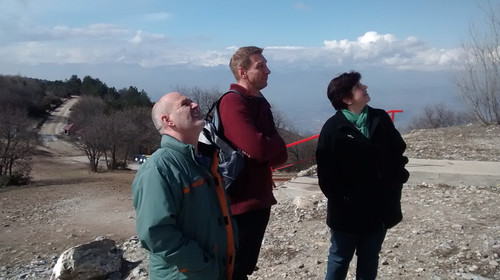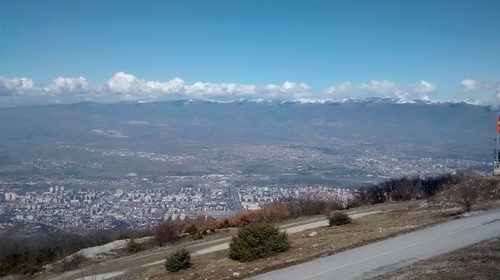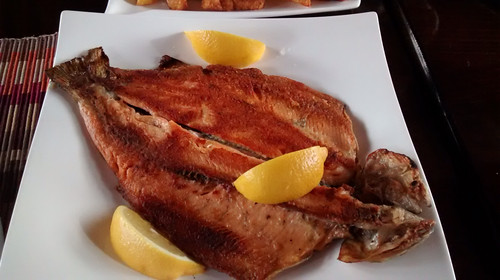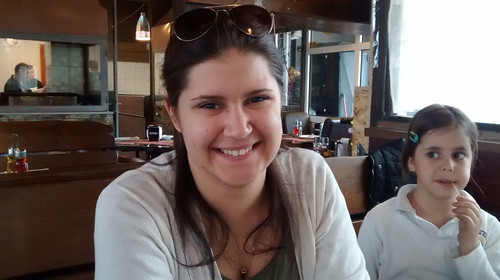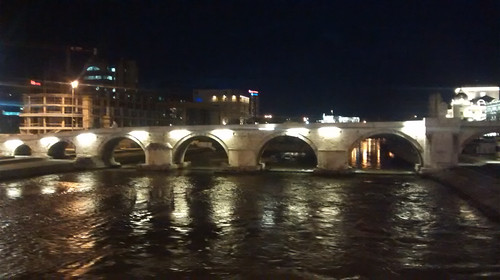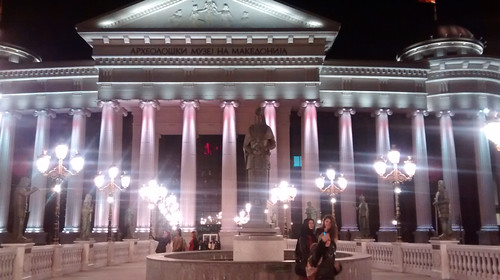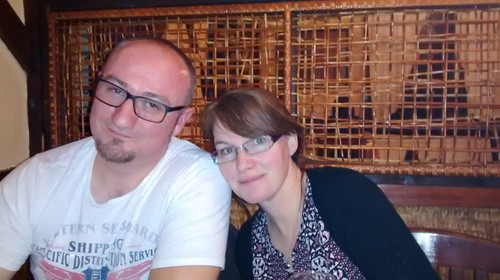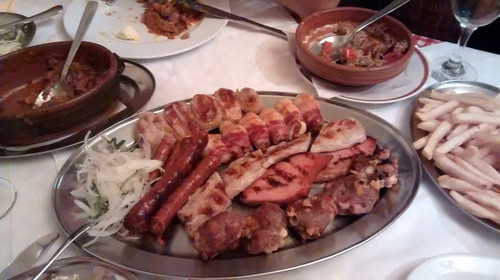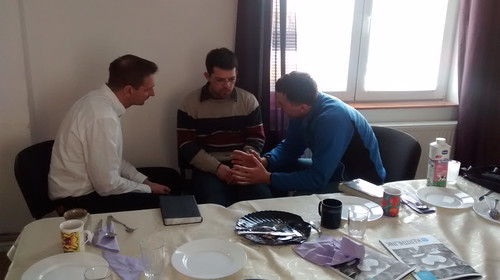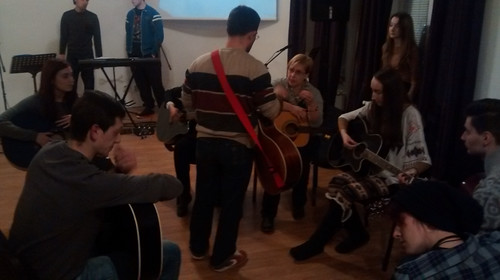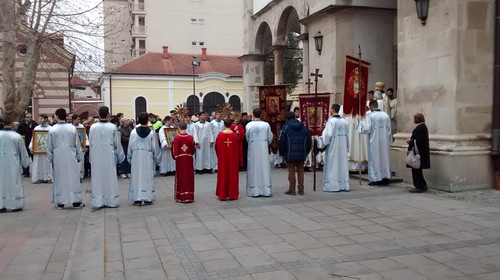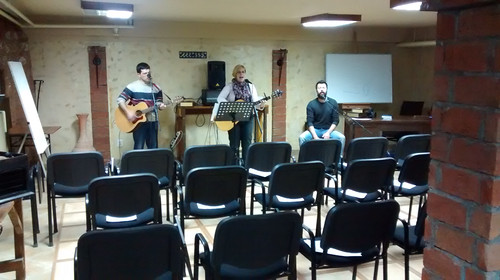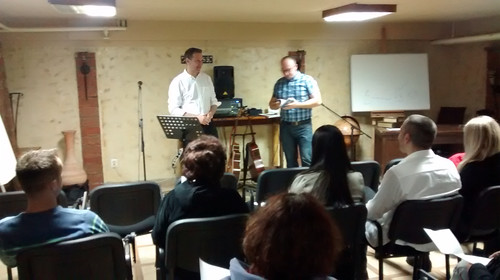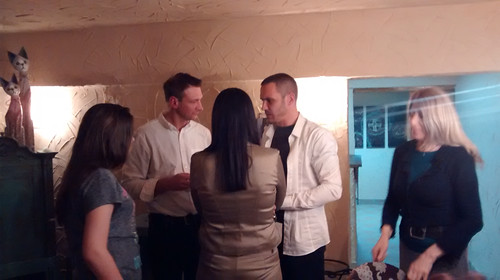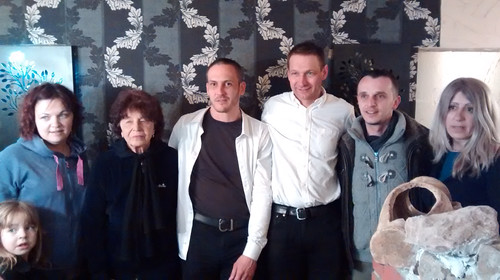I have recently returned from these two land locked countries in southern Europe *having spent 7 days there with Simon Benham. Simon had not been to the churches we have contact with there, so hence the visit to see what it is like on the ground. *(Greece is to the south, Albania and Montenegro to the west and Bulgaria to the east).
We flew with WIZZ air, a budget Hungarian airline from Luton to Skopje, the capital of Macedonia, arriving at midnight on the Wednesday evening. Our good friend Sasha (short for Aleksander...many men are called Aleksander after Alexander the Great, the national hero) was there to greet us and take us to our very welcome hotel by the Vardar river.
Next morning after breakfast Sasha and Marija took us to their home where over coffee we caught up with life in their church and how they are themselves. Their church meets in the hotel we were staying in and they gather people from a part of the city called Aerodrom (not where the present airport is). Marija came to REAL a few years ago and Sasha came to the Willow Leadership Summit in 2013 and visited us again in February 2014.
Then for a bit of sight seeing. So here we are looking up into the sky...
looking at this...yes, a rather large cross. This is the Millenium Cross 66 metres high, built on the highest point on the Vodno mountain at a place that has been known since the time of the Ottoman Empire as Krstovar, meaning Place of the cross. It overlooks the city of Skopje and is floodlight at night.
In case you are wondering, no we didn't walk up the mountain, we took the gondola.
From this vantage point we could see the whole city stretched out before us in the Vardar valley, a city of just over half a million people. Skopje has through history been an important intersection of two trade routes. It is at the crossroads of the east-west route from Constantinople (Istanbul) to Rome and the north-south route from northern Europe to Thessaloniki on the Greek coast.
Holiday makers in the summer from central Europe drive south through Skopje headed for the Greek coast, and trucks from Turkey find their way into Europe and the EU countries heading west.
Time for a late lunch. Surprisingly maybe, for a land locked country, they pride themselves on fish and chips. But I can heartily recommend it. The fish is salmon trout, cooked to perfection
and the chips are golden crisp. I eat here every time I come!
We had lunch with their 3 children, Tamara, Luka and Naomi. Tamara came to our REAL confernce with her mother not wishing to leave her side, but within 10 minutes she had been grabbed by Natalie Jones and Amy Mehta and she was happily serving tea and coffee. That day she came to faith in Christ and has never looked back.
Tamara with her younger sister Naomi.
Sasha, Marija, Naomi and Luka.
By the time our late lunch was finished it was time to walk round the now dark but well lit city centre. This is the 214 metre,13 stone arch flagstone bridge built in the 15ct that has withstood the earthquakes of 1535 and 1963. It connects the old Turkish quarter on the right with the more modern Macedonian area on the left.
The Macedonian Government have spent huge sums in just the last few years constructing many new buildings, art galleries, museums, Government offices, and statues on new bridges.
Time for home and to say our farewells. The next morning Sasha with his mother took Simon and me, in their car north into Serbia to Niš, Serbia's 3rd largest city of about 250,000 people. (Sasha's mother has a brother living in Niš and this was a good excuse to come along and see him).
What links Macedonia and Serbia, along with several other Balkan countries, is that as a people they are Slavs and therefore have a great similarity in their language and they are also both Orthodox in their faith. Macedonians, Serbs, Croats, Montenegrins, Bosnians and Bulgarians all understand one another and are predominantly Orthodox.
A bit of history. In the 9th century two Greek Orthodox brothers who were priests, St Cyril and St. Methodius from Thessalonica, wanted to take the Orthodox faith to the illiterate heathen Slav people in the Balkans. They became the two key missionaries and invented the Glagolithic alphabet a forerunner of the present Cyrillic alphabet which is used in these countries today. They became known as the Apostles to the Slavs and in the Orthodox church they are venerated as saints with the title "equal to apostles."
The Orthodox church is intertwined with the State so to be Serbian means you are Orthodox in your belief and it is considered unthinkable to be anything else other than Orthodox. How could you be Serbian and not be Orthodox??!! So any other church is seen as a sect.
So, we met up with Vlada and Sonja, below, at their home and caught up on all their news. Vlada came to the Willow Creek Leadership Conference In Bracknell in October 2013 and Sonja came to the Willow Conference last year. After that it was time for an evening meal so we went to a traditional Serbian restaurant.
But dont think small Danish pastries, these are huge, twice the size of anything you see in a coffee shop or patisserie here. They are MEN sized!
And after food, Simon gave the guys food for thought.
Then time for lunch. Just to prove I do eat healthily sometimes here is my lunch, chicken risotto.
Saturdaay evening was time for a youth musicians meeting. Most people who came have no faith in God but have been invited along by the churched youth to improve their singing and playing skills. It seemed to be a succesfuland enjoyableway to gather youngpeople. One of the things that struck me was that most of the guitarists were young women, sodifferent from our church where nearly all the musicians are guys. They were led by Karolina and Milos both of whom have been to Bracknell.
Sunday morrning and on our way to Vlada's church we went into an Orthodox Cathedral. Simon had never been in one before and the building and service can be quite a sight. There are significant differences with our own traditions. People cross themselves on entering and leaving the building, you stand during the meeting but their are like half seats by the walls to sit on for elderly or infirm. People come and go quite freely. They enter, buy some candles, light them, say their prayers, cross themselves and leave. Others will stay the whole service through which can be quite lengthy. The walls of the cathedral or church are covered with colourful paintings of venerated saints. These may be the apostles, Mary, and people recognised by the Orthodox Church over the years as saints. There are many icons and on this occasion incense was being burnt.
Here they have processed tound the church building and the bishop,with the gold crown in the doorway, is leading them back into the building.
Then time for Simon to speak at the church we went to.
Sunday lunch was at Vlada and Sonja's apartment with their 2 teenage children. They have a compact 2 bedroom apartment so that means Vlada and Sonja sleep on a pull out bed in the lounge every night! After lunch it was time for us to give the family time to themselves.
On Monday morning, we met again at Sonja and Vlada's apartment, but this time with Karolina and Milos totalk through how the weekend went, Vlada'splans for the future, Simon's thoughts on things and where to from here. It was a very good and usefultime together.
After that we had a meeting in a really nicely furbished basement under one of the apartment blocs.
Time to have good conversations with some of those who had come, some Christians, many not.
